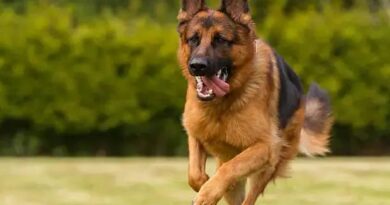What is growling dogs
What is Growling in Dogs?
Growling is a vocalization that dogs use to communicate various emotions and intentions. It can signify anything from playfulness to aggression, depending on the context and the dog’s body language. Understanding the nuances of growling is crucial for dog owners to interpret their pet’s feelings accurately.
Types of Growling
There are several types of growling that dogs may exhibit. Play growling is often accompanied by a wagging tail and a relaxed posture, indicating that the dog is enjoying itself. In contrast, warning growls are usually deeper and more intense, signaling that the dog feels threatened or uncomfortable. Recognizing these differences can help owners respond appropriately to their dog’s needs.
Why Do Dogs Growl?
Dogs growl for various reasons, including fear, discomfort, or as a warning to others. It serves as a form of communication, allowing dogs to express their feelings without resorting to more aggressive behaviors. Understanding why a dog is growling can help owners address the underlying issue, whether it be anxiety, territorial behavior, or simply a desire to play.
Growling as a Warning Signal
When a dog growls as a warning, it is essential to take it seriously. This type of growl often precedes more aggressive actions, such as snapping or biting. Owners should assess the situation and determine what is causing the growl, whether it’s another animal, a person, or an unfamiliar object. Addressing the source of the growl can prevent escalation and ensure the safety of both the dog and those around it.
Playful Growling vs. Aggressive Growling
Distinguishing between playful and aggressive growling is vital for dog owners. Playful growling typically occurs during games like tug-of-war or fetch and is characterized by a light, high-pitched tone. Aggressive growling, on the other hand, is often low and guttural, accompanied by tense body language. Observing the dog’s overall demeanor can help owners determine the intent behind the growl.
How to Respond to Growling
When a dog growls, the owner’s response is crucial. If the growl is playful, engaging in the game can reinforce positive behavior. However, if the growl is aggressive, it is essential to remain calm and avoid punishing the dog, as this can exacerbate fear or anxiety. Instead, redirecting the dog’s attention or removing them from the situation can be more effective in managing their behavior.
Training to Reduce Unwanted Growling
Training can help reduce unwanted growling in dogs. Positive reinforcement techniques, such as rewarding calm behavior and teaching commands, can encourage dogs to communicate in less aggressive ways. Socialization with other dogs and people can also help alleviate anxiety that may lead to growling, fostering a more relaxed and confident pet.
Understanding Your Dog’s Body Language
To interpret growling accurately, it’s essential to understand your dog’s body language. Signs of stress, such as raised hackles, a stiff tail, or bared teeth, often accompany aggressive growling. Conversely, a relaxed body posture, wagging tail, and playful stance indicate a friendly growl. Being attuned to these signals can enhance the owner’s ability to respond appropriately.
When to Seek Professional Help
If a dog’s growling becomes frequent or escalates to aggression, it may be time to seek professional help. A veterinarian or a certified dog trainer can provide guidance on behavior modification techniques and assess whether underlying health issues contribute to the growling. Early intervention can prevent more serious behavioral problems down the line.



